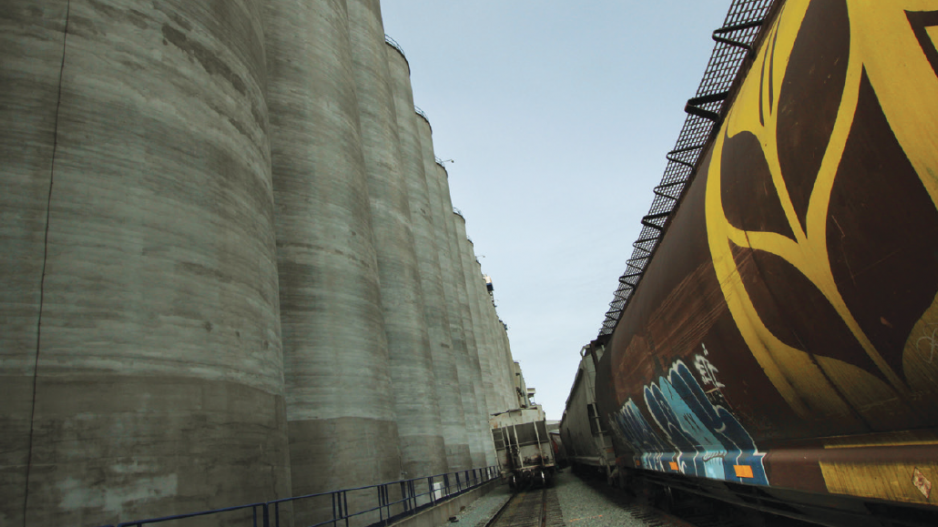Grain shipping industry stakeholders and analysts are applauding the federal government’s move to modernize Canadian transportation law and streamline regulations in the sector.
In May, Transport Minister Marc Garneau tabled legislation aimed at addressing the needs of grain shippers and railway carriers after years of talks between them and the government.
Bill C-49, which passed second reading in the House of Commons on June 19, amends many elements of the Canada Transportation Act and specifically addresses air and rail transportation. The bill was meant to be the Liberal government’s response to Bill C-30, which was introduced in 2014 to amend the Canada Grain Act to allow for increased railway competition.
University of Saskatchewan Prof. James Nolan, an expert in grain transportation economics, said the bill overall is an improvement for grain shippers.
“The bill is surprisingly pro-shipper. Shippers have got a fair number of concessions that they wanted out of the government to meet their requirements.”
Nolan said the bill’s most significant change is the introduction of long-haul interswitching, which allows grain companies to change rail carriers to transport their goods if negotiations with the primary carrier do not meet their needs.
He added that changes to limits on revenue earned by Canadian railway companies, “maximum revenue entitlement” (MRE), are significant because they allow for more transparency and accountability.
Nolan said the MRE calculation is being readjusted by each railway to account for cost of capital and other factors. He said the effects of the MRE increase are hard to predict, but he hopes it will help shippers.
“If allowing that revenue cap to change gets you more access to hopper cars and gets you better contracts overseas, as a shipper you may benefit from that.”
Wade Sobkowich, executive director of the Western Grain Elevator Association, said the MRE “keeps a check on freight rates for the grain industry for the foreseeable future.”
The changes will mean rail carriers need to make some major investments, but Sobkowich said those costs can be covered through increased freight rates.
“Because they’re now going to be held financially accountable, they will have to make their business decisions accordingly. We expect it will mean they will have to bring on more capacity in order to meet their contractual obligations.”
Sobkowich said the strongest part of the bill is its provision for enforcement of reciprocal penalties in service-level agreements (SLAs) between shippers and grain carriers.
“If it becomes law, then a grain shipper or any shipper in Canada, if they can’t negotiate penalty provisions with a railway, will have the ability to go to an arbitrator under the [Canada Transportation Act], and the arbitrator has the ability to rule penalties into an SLA. That provides discipline in the system and really brings about balance to accountability.”
Sobkowich added that the bill will improve service by prioritizing accountability and raising the financial consequences of non-compliance.
“We think the supply chain should operate more efficiently because everybody in the chain is [now] going to be accountable to the party on either side of them, in that chain.”
Brett Malkoske, vice-president of corporate communications and development at G3 Terminal Vancouver, a new grain handling and export facility being developed in the Port of Vancouver, said changes being implemented through the new terminal will also address rail issues.
“Upon completion of G3 Terminal Vancouver and the new elevators in 2020, our new infrastructure investments will substantially decrease rail cycle times from current industry standards. G3’s loop-to-loop model will allow us to move more grain more efficiently than ever before – something that all stakeholders, including farmers, end-use customers and the railroads, will benefit from.”
Nolan added that the interswitching changes will foster competition among carriers and allow shippers to negotiate reasonable rates. He said the extended radius of 1,200 kilometres from 160 kilometres for interswitching could bring in U.S. competition, which will give shippers more options.
“The shippers have saved millions of dollars in rates because they were able to get a competing railway to come in and take their shipment for less money than the original railway was charging them. New interswitching rules should really help the north-south movement of grain.”
Sobkowich said the soon-to-be-implemented long-haul interswitching provisions are “better than nothing.” But he added that the current extended interswitching provisions, which do not require the approval of an agency, are better.
Those provisions will expire at the end of July. Long-haul interswitching, he said, requires shippers to go to their primary carrier and negotiate contracts. Only if those contracts fail are shippers allowed to go to the agency and apply for a long-haul inter-switch order.
“Long-haul interswitching provisions cannot be characterized as a true competitive tool the same way that extended interswitching was,” Sobkowich said. “Long-haul interswitching is more of a backstop of abusive monopoly powers.”
Sobkowich said he approves of the new bill’s measures to protect grain shippers, including the ability to file service-level complaints and to have an arbitrator institute a contract between shipper and carrier.
Accountability, he said, “goes both ways now.”
Luc Jobin, Canadian National Railway (TSX:CNR) president and CEO, said CN welcomes the federal government’s decision to change the MRE framework “to remove some of the disincentives that have discouraged the acquisition of grain hopper cars.”
But Jobin is concerned that the new long-haul interswitching provisions will give U.S. railways more access to Canadian business.
“Our initial view is that long-haul interswitching may have unintended consequences with respect to investment and will give U.S. railways access to the Canadian market at regulated rates – without reciprocity.” •




